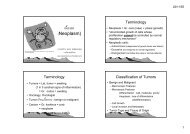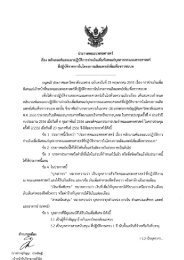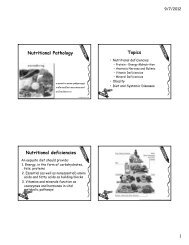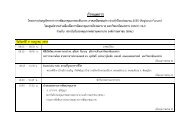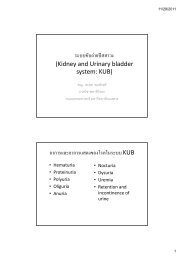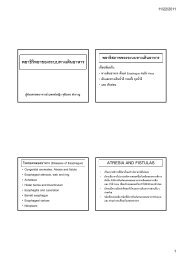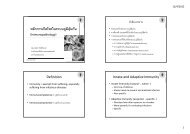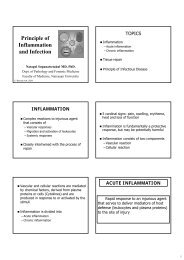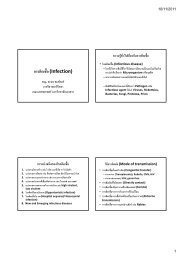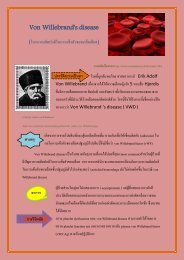ฉบับที่ 9 -1.pmd - Faculty of Medicine - มหาวิทยาลัยนเรศวร
ฉบับที่ 9 -1.pmd - Faculty of Medicine - มหาวิทยาลัยนเรศวร
ฉบับที่ 9 -1.pmd - Faculty of Medicine - มหาวิทยาลัยนเรศวร
- No tags were found...
Create successful ePaper yourself
Turn your PDF publications into a flip-book with our unique Google optimized e-Paper software.
Boonchai Kijsanayotin a,*,1 , Supasit Pannarunothai b , Stuart M. Speedie caBureau <strong>of</strong> Policy and Strategy, Ministry <strong>of</strong> Public Health, Tiwanon Rd., Nonthaburi 11000, ThailandbCenter for Health Equity Monitoring, <strong>Faculty</strong> <strong>of</strong> <strong>Medicine</strong>, Naresuan University, Phitsanulok, ThailandcInstitute for Health Informatics, University <strong>of</strong> Minnesota, Minneapolis, MN, USAA B S T R A C Tศ.นพ.ศุภสิทธิ์ พรรณารุโณทัยคณบดีคณะแพทยศาสตรBackground: One <strong>of</strong> the most important factors for the success <strong>of</strong> health information technology(IT) implementation is users’ acceptance and use <strong>of</strong> that technology. Thailand hasimplemented the national universal healthcare program and has been restructuring thecountry’s health IT system to support it. However, there is no national data available regarding theacceptance and use <strong>of</strong> health IT in many healthcare facilities, including communityhealth centers (CHCs). This study employed a modified Unified Theory <strong>of</strong> Acceptance andUse <strong>of</strong> Technology (UTAUT) structural model, to understand factors that influence health ITadoption in community health centers in Thailand and to validate this extant IT adoptionmodel in a developing country health care context.Methods: An observational research design was employed to study CHCs’ IT adoption anduse. A random sample <strong>of</strong> 1607 regionally stratified CHC’s from a total <strong>of</strong> 9806 CHCs wasselected. Data collection was conducted using a cross-sectional survey by means <strong>of</strong> selfadministeredquestionnaire with an 82% response rate. The research model was appliedusing the partial least squares (PLS) path modeling.Results: The data showed that people who worked in CHCs exhibited a high degree <strong>of</strong> ITacceptance and use. The research model analyses suggest that IT acceptance is influenced byperformance expectancy, effort expectancy, social influence and voluntariness. Health ITuse is predicted by previous IT experiences, intention to use the system, and facilitating conditions.Conclusions: Health IT is pervasive and well adopted by CHCs in Thailand. The study resultshave implications for both health IT developmental efforts in Thailand and health informaticsresearch. This study validated the UTAUT model in the field context <strong>of</strong> a developingcountry’s healthcare system and demonstrated that the PLS path modeling works well in afield study and in exploratory research with a complex model.journal homepage: www.intl.elsevierhealth.com/journals/ijmi



